Do you confuse the important with the urgent? Prioritizing the wrong decisions and tasks can often lead to incessant work pressure and stress. The Eisenhower Box can help you distinguish the urgent from the important.
Most of us often struggle with time management. We are always striving hard to solve one problem and then immediately running after the other. When we spend most of our time managing one crisis after the other, our productivity gets hampered. Wrong prioritization eventually leaves us feeling completely drained of all our energy without actually achieving anything meaningful. This specifically happens when we are unable to distinguish between important and urgent tasks.

The Eisenhower Box, also known as the Eisenhower Decision Matrix, can help you organize, prioritize and decide what needs to be done without overlapping any commitments.
Urgent and important activities
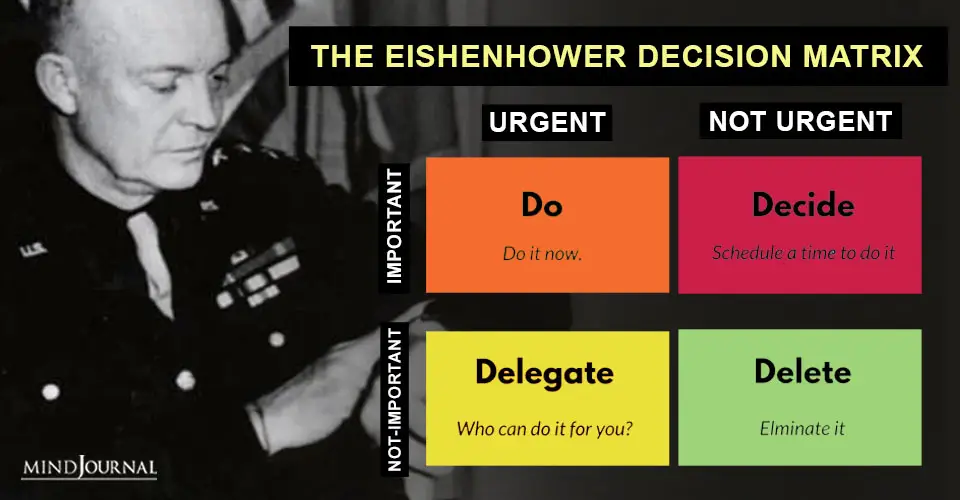
“I have two kinds of problems, the urgent and the important. The urgent are not important, and the important are never urgent.” – Former U.S. President Dwight D. Eisenhower
Time management requires that we are both efficient and effective. This means we need to invest our time equally in doing things that are urgent as well as important. However, to gain mastery over time management, we first need to understand the basic difference between urgent and important. Important activities lead to an outcome and a personal or professional accomplishment of goals.
Urgent activities require our immediate attention as they can often have immediate consequences when not dealt with a sense of urgency. However, most of us often confuse the urgent with the important without realizing how it can affect our life and happiness.
Authors Brett & Kate McKay of Art Of Manliness write “Urgent means that a task requires immediate attention. These are the to-do’s that shout Now!” They explain that the urgent makes us reactive and is often characterized by a “defensive, negative, hurried, and narrowly-focused mindset.”
On the other hand, important activities are those which “contribute to our long-term mission, values, and goals. Sometimes important tasks are also urgent, but typically they’re not,” write Brett & Kate. They add that important tasks make us responsive and enable us to “remain calm, rational, and open to new opportunities.”
Also Read: The Three Parts Of The Mind: How It Affects Your Decisions & Your Life
By mistaking the urgent as important, we begin to suffer from mental and emotional exhaustion, burnout, and even stagnation. Dwight David Eisenhower, a five-star American army general and the 34th President of the United States realized the importance of distinguishing the urgent from the important and the significance of prioritizing our tough decisions.
This encouraged him to develop the globally-renowned Eisenhower Box or the Eisenhower Decision Matrix. This method can enable us to plan, prioritize, delegate, and schedule activities based on their urgency and importance and be more productive to achieve your goals.

What is the Eisenhower Box?
Popularized by author Stephen Covey in his book The 7 Habits of Highly Effective People, Eisenhower’s decision principle can help us identify what is important and unimportant, what is urgent and not urgent. The Eisenhower Box is an Urgent-Important Matrix which can be a powerful tool for effective decision making and time management. It allows you to prioritize urgent and important tasks and sort out less urgent and unimportant activities that you can either delegate or even delete from your schedule.
“It’s a useful time management tool for getting things done. It’s a prioritization framework. It focuses on radical or extreme prioritization,” explains entrepreneur Thomas Oppong. It helps us focus on long-term strategic decisions and look at the bigger picture instead of urgent tasks that are beneficial only for the short term.
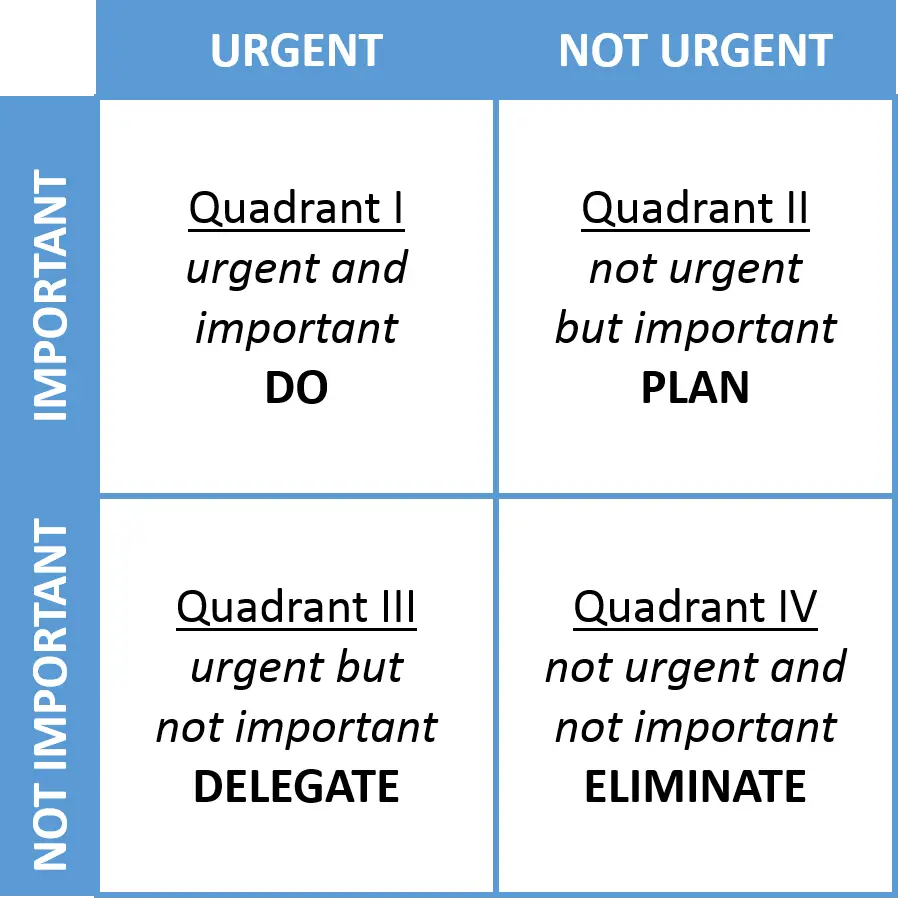
The Eisenhower Decision Matrix comprises of 4 quadrants or boxes, namely:
- Quadrant One: Important and Urgent (Do First)
- Quadrant Two: Important but Not Urgent (Schedule)
- Quadrant Three: Not Important but Urgent (Delegate)
- Quadrant Four: Not Important and Not Urgent (Delete)
“A lot of things that take up mental energy, waste time, and rarely move you toward your goals can easily be eliminated if you apply the Eisenhower Principle,” adds Oppong, founder of AllTopStartups.
Here we are going to take a closer look at each of the quadrants mentioned in the Eisenhower Box to understand which categories we need to focus more on to build a better life.
1. Quadrant One: Important and Urgent (Do First)
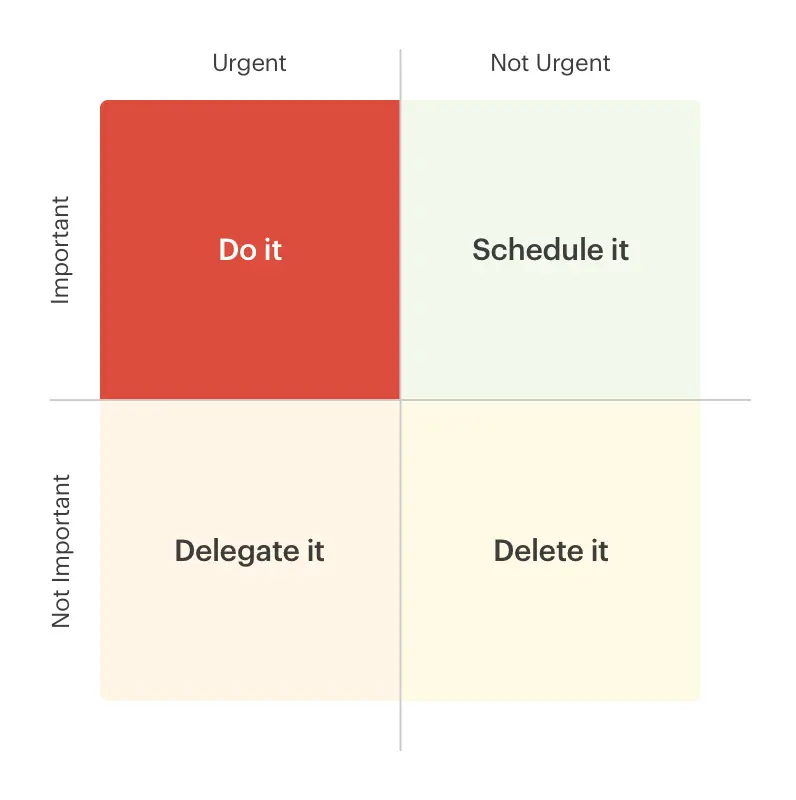
According to the Eisenhower Box, important and urgent activities require you to do them first. As these tasks generally have a deadline, they demand that you take immediate action as there might be consequences for procrastination. These tasks usually come up suddenly due to external factors or have been delayed till the last moment. These need to be completed at the latest and require a crisis mode response.
Brett & Kate McKay explain “Quadrant 1 tasks are both urgent and important. They’re tasks that require our immediate attention and also work towards fulfilling our long-term goals and missions in life.” These activities generally include deadlines, emergencies, problems and crisis situations such as :
- Specific emails that require immediate attention (job or business opportunity emails)
- Tasks with deadlines (assignments, homework, reports, presentations, tax deadline)
- Car breaks down on the road
- Client problems
- Family emergencies
- Household chores
- Meetings
- Any other emergency or crisis
Important and urgent tasks are inevitable. However, when you shift your focus from long-term goals which are important to you to give more attention to Quadrant 1 tasks, then it can be a problem. According to author Stephen Covey, when we invest excessive time only on Quadrant 1 tasks, then it can result in feelings of mental and emotional exhaustion, burn out and increased stress.
“While we’ll never be able to completely eliminate urgent and important tasks, we can significantly reduce them with a bit of proactivity and by spending more time in Quadrant 2,” add the McKays.
Also Read: Institutional Thinking: The Matrix of 1984 And The Allegory of The Cave
2. Quadrant Two: Important but Not Urgent (Schedule)
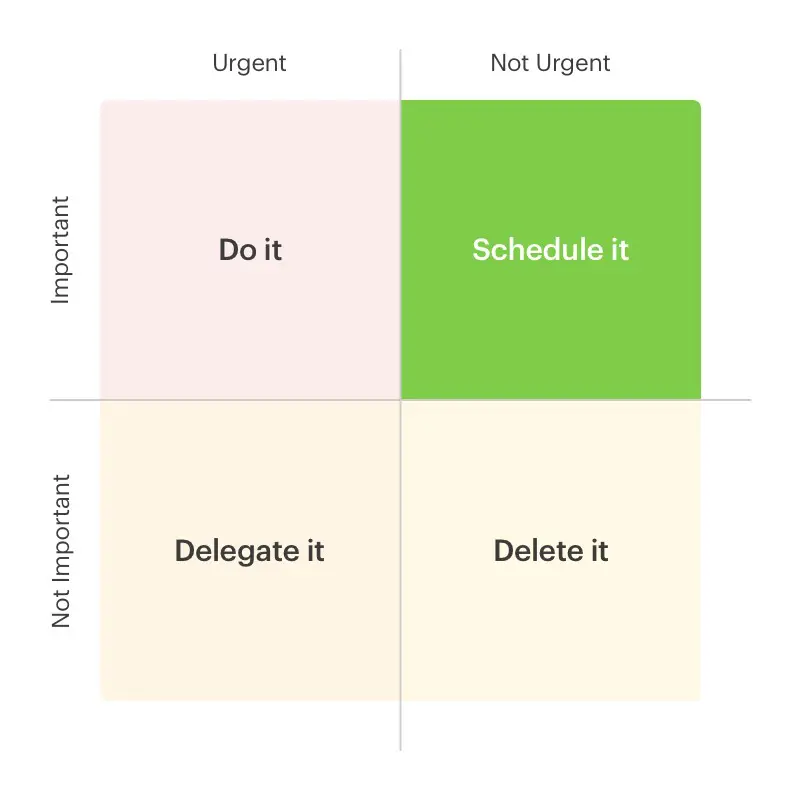
The second quadrant of the Eisenhower Decision Matrix focuses on the tasks that are important but are less or not urgent. These activities enable you to focus on your professional and personal goals and development.
The essential rule for Quadrant Two is to smartly schedule your time and work on them with equal dedication and effort. When we delay these tasks, they will eventually become urgent, become more challenging or may never be completed. When you distribute your time effectively to do these activities properly and have plenty of time for unforeseen problems, you will boost your productivity, maximize your effectiveness and avoid stress.
Brett & Kate writes “Quadrant 2 tasks are the activities that don’t have a pressing deadline, but nonetheless help you achieve your important personal, school, and work goals… Q2 tasks are typically centered around strengthening relationships, planning for the future, and improving yourself.”
Also Read: 3 Ways to Help You Make Difficult Decisions
Here are some examples of important but not urgent tasks:
- Short and long term planning
- Regular household chores
- Maintenance projects
- Family time
- Professional networking
- Personal relationship building
- Exercising
- Self development (reading, learning new skills, journaling, meditating etc)
- Financial planning and creating budgets
- Pursuing your hobbies
Covey believes that we should invest more time on Quadrant 2 tasks of the Eisenhower Box as these can lead us towards lasting success, fulfillment, and happiness. We often tend to wrongly associate urgency with importance. By properly scheduling the tasks in the second quadrant, you will be able to constantly pursue your goals, which “will be beneficial to you in the long term” explains Develop Good Habits.
The McKays write “Because Q2 activities aren’t pressing for our attention, we typically keep them forever on the backburner of our lives… To overcome our inherent present-bias that prevents us from focusing on Quadrant 2 activities, we must live our lives intentionally and proactively.” Hence, we need to stop running our lives in auto-pilot mode and consciously choose and decide to invest our time in doing what is important to us.
3. Quadrant Three: Not Important but Urgent (Delegate)
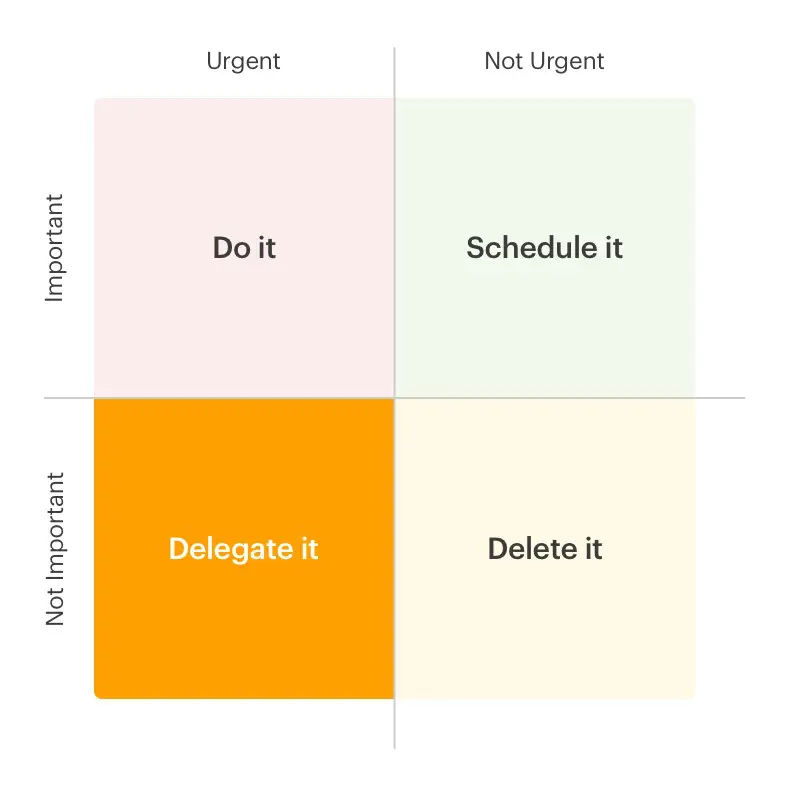
The third quadrant of the Eisenhower Box refers to those activities which may be less important or unimportant to you, but require your urgent attention and action. These tasks are often decided or assigned by others and often prevent you from accomplishing your long term goals. You should ask yourself whether you can delegate Quadrant 3 tasks or reschedule them. One of the prominent factors of these tasks is other people. You may choose to deny doing these tasks by politely saying “no” whenever possible, or you can motivate others to work on their problems and tasks themselves.
“Quadrant 3 tasks are activities that require our attention now (urgent), but don’t help us achieve our goals or fulfill our mission (not important),” add the authors from the Art Of Manliness. They write “Most Q3 tasks are interruptions from other people and often involve helping them meet their own goals and fulfill their own priorities.”
Some examples of Quadrant 3 activities are:
- Responding to emails that are urgent but not important
- Answering phone calls, text messages or social media messages
- Certain meetings
- Needless interruptions from new coworkers while you’re working
- Requests for favors from team members, friends or family members
Urgency takes center stage here and may even affect our lives. As we spend our time on assumed urgent activities, we focus on tasks that are not meaningful or valuable to us. Investing too much time on Quadrant 3 tasks can make us feel like we are not being able to control our daily life, wasting our time, and not living up to our fullest potential. Covey believes it is best to delegate these tasks as much as possible.
Brett & Kate McKay explain that Quadrant 3 tasks are “not necessarily bad, but they need to be balanced with your Q2 activities. Otherwise, you’ll end up feeling like you’re getting a lot done from day-to-day, while eventually realizing that you’re not actually making any progress in your own long-term goals. That’s a recipe for personal frustration and resentment towards other people.”
Also Read: 4 Things You Can Do That Will Help You Make The Right Decisions
4. Quadrant Four: Not Important and Not Urgent (Delete)
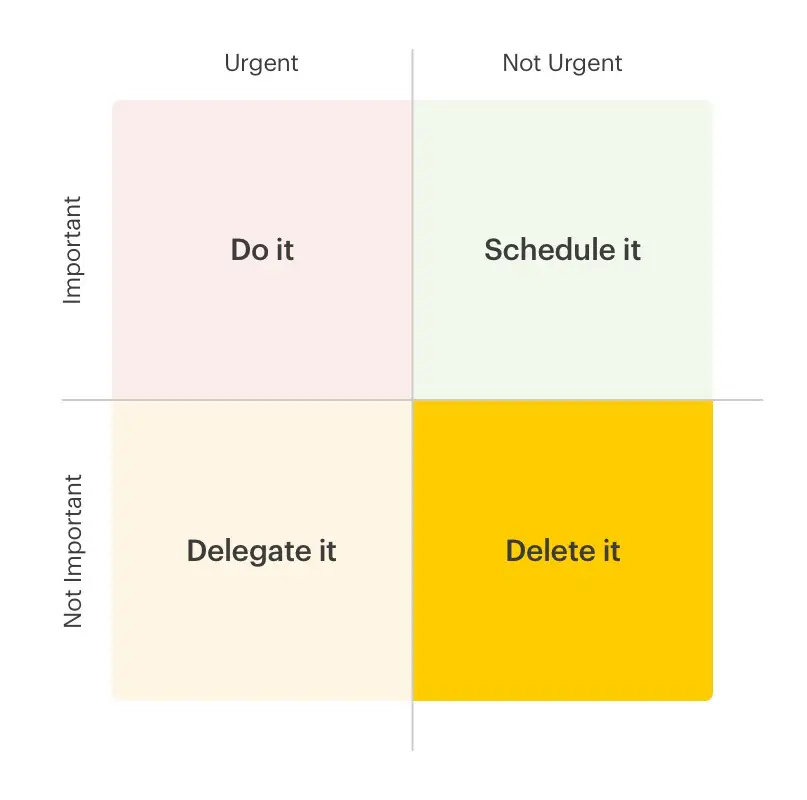
The final quadrant in the Eisenhower Box is called don’t do or delete because the activities that fall in this category are usually distractions, waste your time and are unproductive. It is best to simply avoid or cancel these tasks, if possible. If you need to engage in such tasks due to external reasons and for other people, try to find your way out of it by politely taking a stand and saying “no.” Not important and not urgent tasks should be cut out as they do not add to your progress or the accomplishment of your goals in any way. However, these activities tend to consume huge chunks of time. Be aware and identify such useless tasks and bad habits that prevent you from reaching your professional and personal goals.
Authors Brett & Kate McKay add “Q4 activities aren’t pressing nor do they help you achieve long-term goals or fulfill your mission as a man. They’re primarily distractions.”
Some common examples of not important and not urgent tasks are:
- Watching TV for hours
- Wasting time on the internet without a purpose
- Scrolling through social media
- Playing video games
- Gambling
- Shopping excessively
- Lying in bed all day & being lazy
Quadrant 4 of the Eisenhower Decision Matrix focuses on tasks that lead to immediate and excess gratification without making you feel satisfied or fulfilled. Sadly, most of us tend to spend a lot of time in this quadrant. It’s not that we shouldn’t enjoy some leisurely downtime, however, the key is finding a balance that enables you to pursue your goals and relax your mind and body effectively. Too much leisure can certainly affect your mindset and productivity and proactivity.
According to a 2019 study published in the Journal of Applied Psychology, people who invest time in distracting activities, like watching TV, may experience a level of positivity in their mindset and productivity the next day.
However, continued engagement in distraction adversely affected their moods and motivation as their productivity reduced significantly in the coming days. While, people who engage in self-development activities like exercise, meditation, yoga, or volunteering tend to be more calm and focused in their work. So, when in moderation, distraction can be okay, but excessive indulgence can be counter-productive.
“Instead of aiming to completely rid yourself of Not Urgent and Not Important tasks, try to only spend a very limited amount of time on them. 5% or less of your waking hours is a good goal,” suggest the McKays.
How to use the Eisenhower Box
If you are wondering how you can implement the Eisenhower Decision Matrix into your life, then here is a helpful guideline that will show you how you can get started:
- Make a to-do list as it will help you to organize your important and urgent tasks.
- Set a limit for the number of Quadrant 1 tasks you want to accomplish in a certain period of time. Try to include only 8 tasks for each quadrant.
- Question yourself and verify what is urgent and important and worth doing first.
- Plan ahead. Always schedule your tasks the evening before for the next day so that you have a clear objective.
- Avoid distractions and do not allow other people or external factors to interfere or influence your priority.
- Identify the tasks that you can delegate to others and keep checking the progress.
- Try to avoid multitasking and focus on completing one task at a time.
- Utilize tools that can help you with managing time and bad habits like social media blocking tools.
- Avoid procrastination as much as possible. Do not spend excessive time on Quadrant 4 tasks on a daily basis.
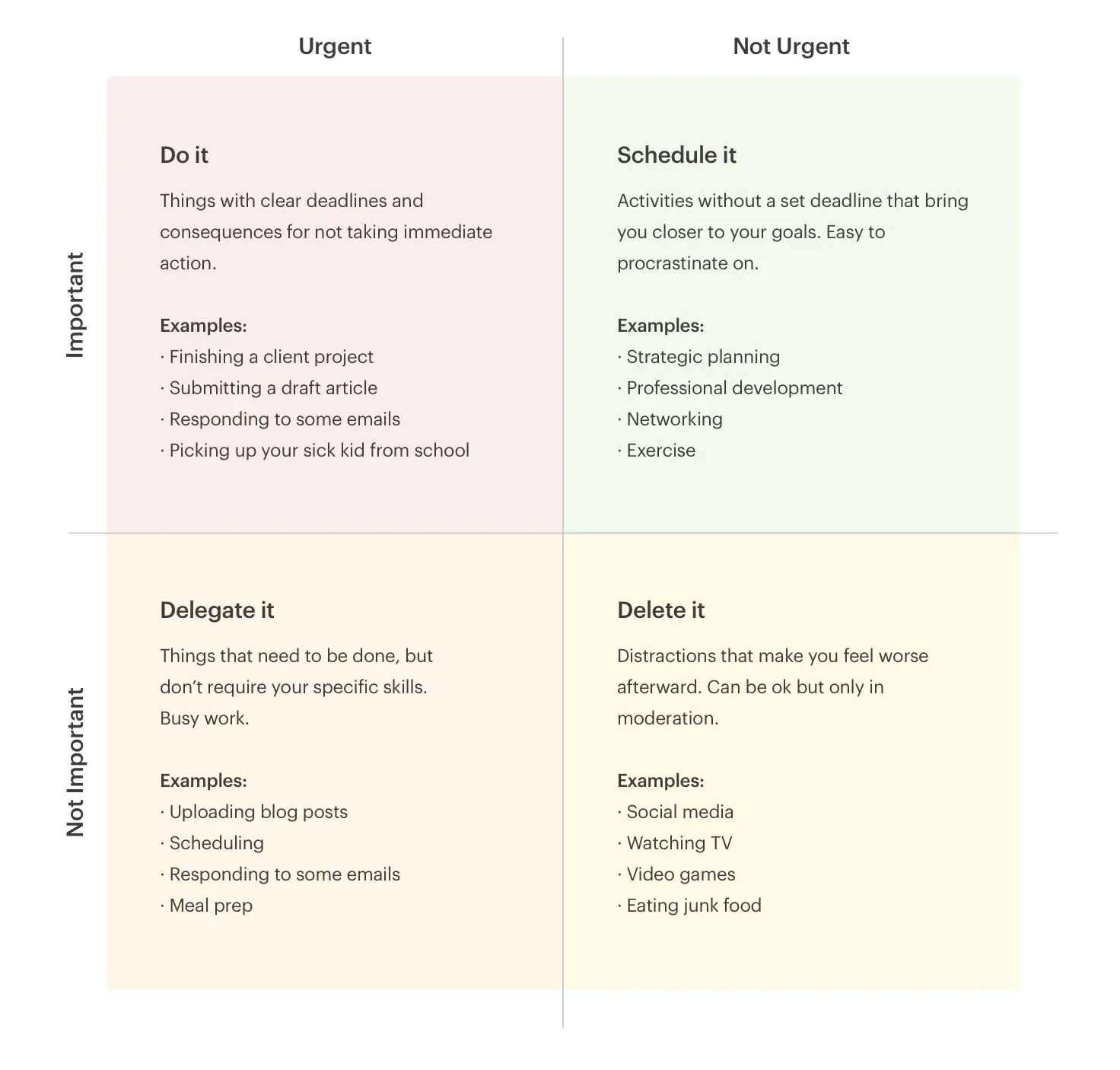
Live up to your full potential
“The end goal of the Eisenhower Method is to help you filter the noise from your decisions and concentrate on what really matters to you,” explains Thomas Oppong. If you wish to improve your productivity, time management and your life, then you need to prioritize the most important and urgent tasks first on a daily basis. Moreover, you also need to invest more time on tasks in the first two quadrants of the Eisenhower Box. It is also important that you ensure that you are not just being reactive, but accomplishing tasks that are important to you.
“I promise as you spend most of your time working on Not Urgent but Important tasks, you’ll feel a renewed sense of calm, control, and composure in your life. You’ll feel like you’re making real progress,” write Brett & Kate McKay. Oppong adds “You can only benefit from the Eisenhower Method if you can commit yourself to making radical categorization of your daily tasks.”
What are you waiting for? Use the Eisenhower method to maximize your productivity now.
Read also: 6 Positive Psychology Practices To Boost Happiness and Improve Your Life
Here is an interesting video that you may find helpful:
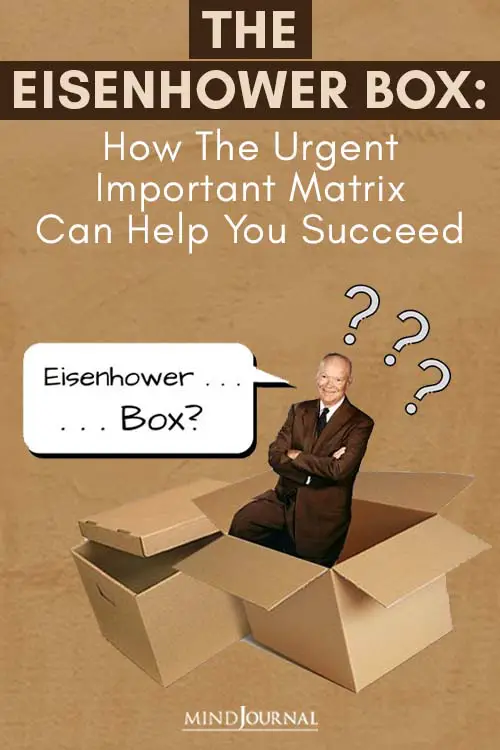
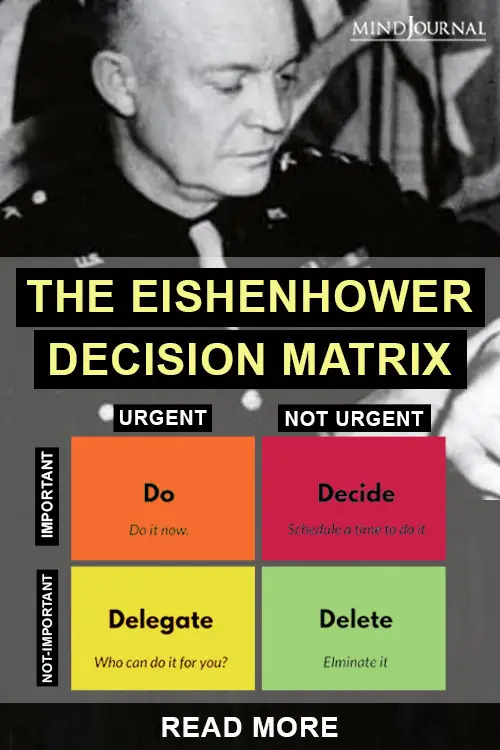
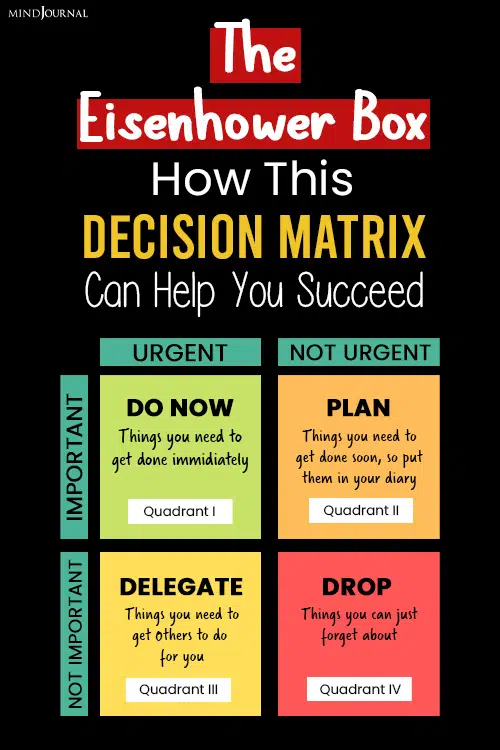
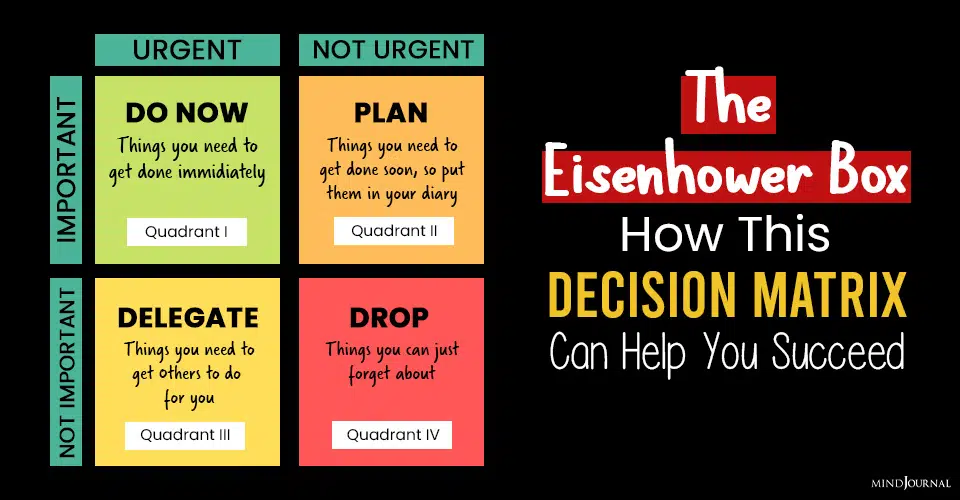

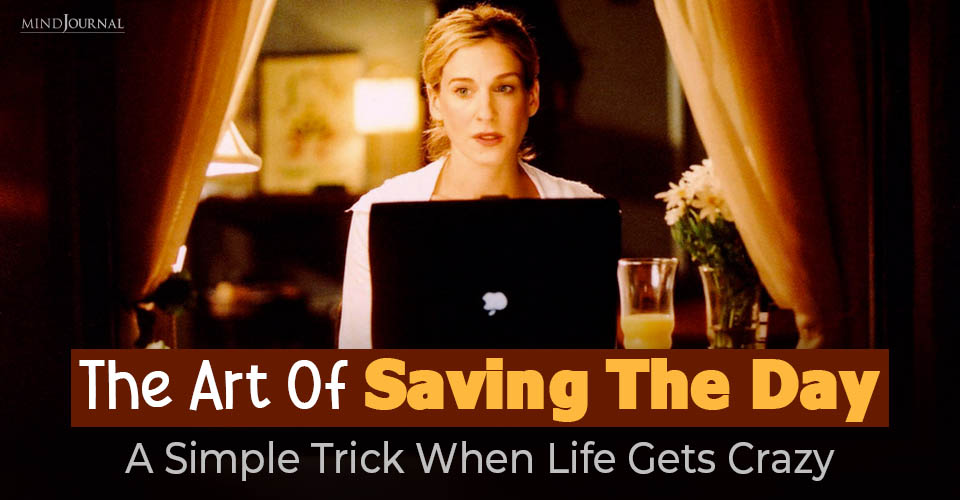
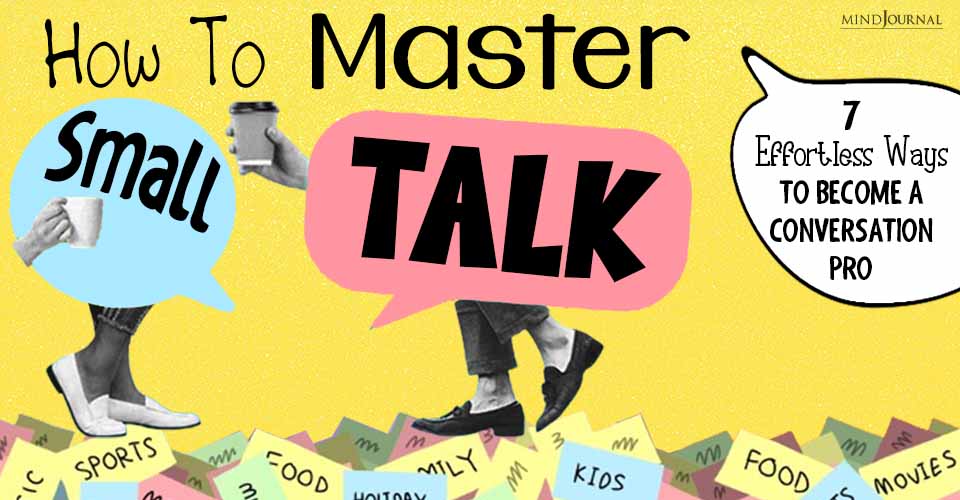

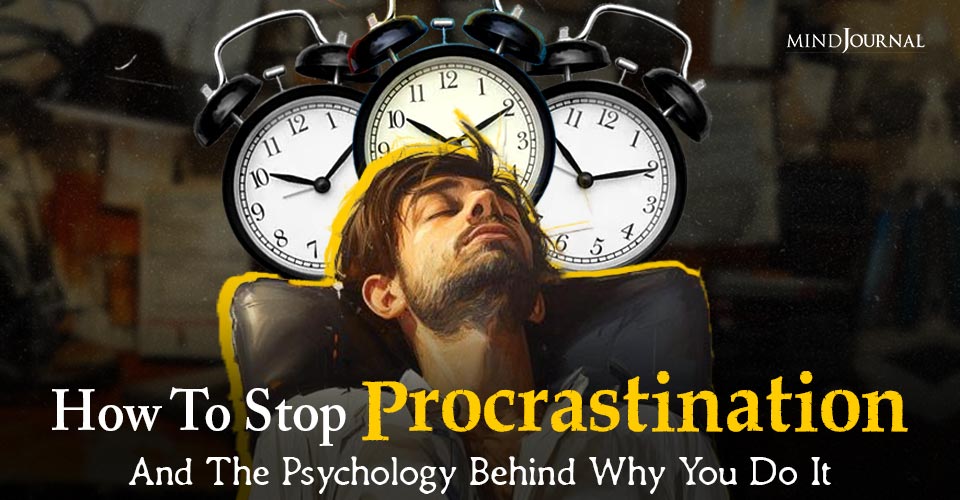
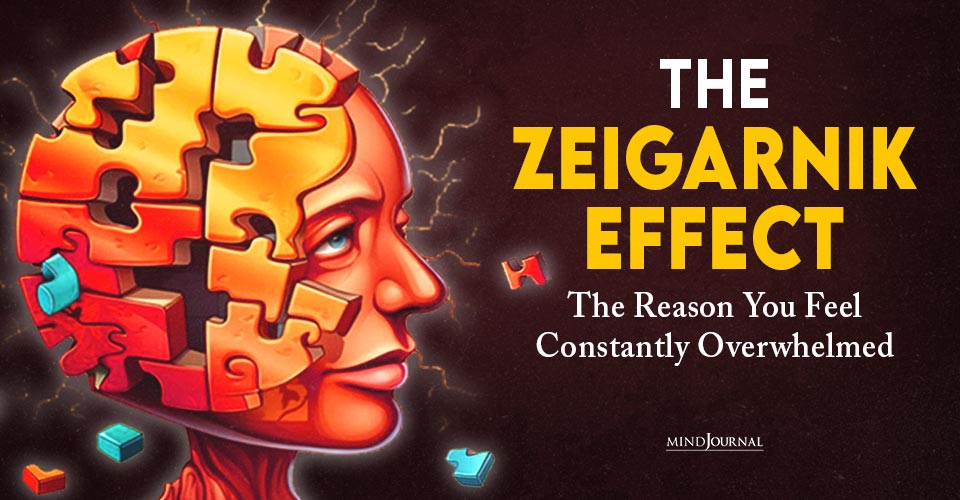

Leave a Reply
You must be logged in to post a comment.